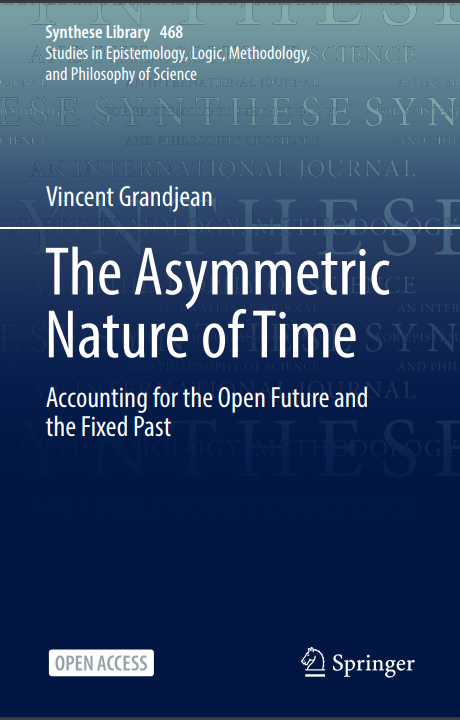The Asymmetric Nature of Time
Editorial: Springer Cham
Licencia: Creative Commons (by)
Autor(es): Vincent Grandjean
This open access monograph offers a detailed study and a systematic defense of a key intuition we typically have, as human beings, with respect to the nature of time: the intuition that the future is open, whereas the past is fixed. For example, whereas it seems unsettled whether there will be a fourth world war, it is settled that there was a first world war.
The book contributes, in particular, three major and original insights. First, it provides a coherent, non-metaphorical, and metaphysically illuminating elucidation of the intuition. Second, it determines which model of the temporal structure of the world is most appropriate to accommodate the intuition, and settles on a specific version of the Growing Block Theory of time (GBT). Third, it puts forward a naturalistic foundation for GBT, by exploiting recent results of our best physics (viz. General Relativity, Quantum Mechanics, and Quantum Gravity).
Three main challenges are addressed: the dismissal of temporal asymmetries as non-fundamental phenomena only (e.g., thermodynamic or causal phenomena), the epistemic objection against GBT, and the apparent tension between GBT and relativistic physics. It is argued that the asymmetry between the open future and the fixed past must be grounded in the temporal structure of the world, and that this is neither precluded by our epistemic device, nor by the latest approaches to Quantum Gravity (e.g., the Causal Set Theory).
Aiming at reconciling time as we find it in ordinary experience and time as physics describes it, this innovative book will raise the interest of both academic researchers and graduate students working on the philosophy of time. More generally, it presents contents of interest for all metaphysicians and non-dogmatic philosophers of physics.
Compartir:
Una vez que el usuario haya visto al menos un documento, este fragmento será visible.


